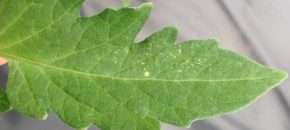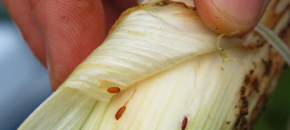Fruit rots in strawberry can cause significant losses if not recognized early and controlled. The use of good cultural practices such as: keeping fields weed-free and promoting good drainage; long crop rotations, and preventative fungicide applications are critical. Pathogens such as anthracnose, gray mold (Botrytis), and leather rot can become systemic problems in strawberry plantings […]
Continue reading...Veg IPM Update: Week Ending 5/3/16

Note: The black light trap network has been deployed and is being monitored by IPM Program personnel. The corn earworm (CEW) pheromone trap network is not yet deployed. As adult European corn borer (ECB) and CEW begin to arrive in traps, population maps of these pests will be published in the Plant and Pest Advisory […]
Continue reading...On-Farm Food Safety:
The Difference Between an Audit & an Inspection
Over the last 15 years we have talked about third party audits to verify your food safety plan. Now you are hearing about inspections. What is the difference? Audits Audits are voluntary evaluations that growers are doing at the request of their buyers. Some growers may not think that audits are voluntary since some growers […]
Continue reading...Allium Leafminer, a New Invasive Pest

Allium leafminer, a leafmining fly, was found about two weeks ago in Lancaster County, Pennsylvania. Since then the leafminer, which feeds on onions and related plants, has been found in four more counties in eastern Pennsylvania; Dauphin, Delaware, Chester, and Lehigh. This is the first time that this fly has been found in the western […]
Continue reading...Vegetable Disease Briefs – 5/1/16
Dickeya sp., an aggressive form of Black leg, has been confirmed on potato in New Jersey in 2016. Symptoms of Dickeya infection look similar to Black leg infection and can cause significant rot above ground (stems and foliage) and below ground (tubers). All potato growers should scout on a regular basis and report any suspect […]
Continue reading...Vegetable Disease Update – 5/1/16
Cabbage Damping-off – To help control losses due to damping-off pathogens apply Ridomil Gold (mefenoxam, FRAC code 4) at 1 to 2 pt/A, MetaStar (metalaxyl, 4) see label, or azoxystrobin at 0.40 to 0.80 fl oz 2.08SC/1000 row ft (for Rhizoctonia only), or Ridomil Gold at 1.0 to 2.0 pt/A 4SL plus azoxystrobin at 0.40 […]
Continue reading...